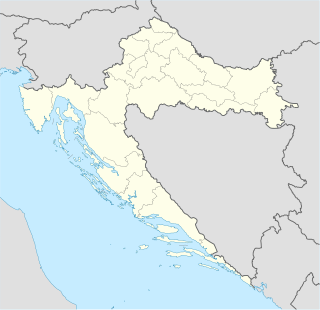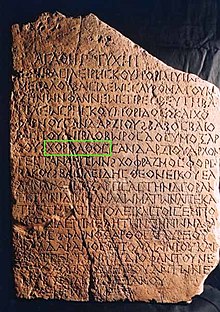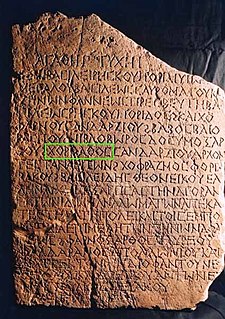Jarylo, alternatively Yarylo, Iarilo, or Gerovit, is a Slavic god of vegetation, fertility and springtime.
A župa is a historical type of administrative division in Central Europe and the Balkans, that originated in medieval Slavic culture, often translated into "county" or "district". It was mentioned for the first time in the 8th century. It was initially used by the South and West Slavs, denoting various territorial units of which the leader was the župan. In modern Croatian and Slovenian, the term župa also means an ecclesiastical parish.

Ban was a noble title used in several states in Central and Southeastern Europe between the 7th century and the 20th century, primarily in medieval Croatia and Hungary and their respective predecessor states. In English, a common term for the province governed by the ban is banate and term for the office of the ban is banship.
Radoslav Katičić is a Croatian linguist, classical philologist, Indo-Europeanist, Slavist and Indologist, one of the most prominent Croatian scholars in the field of humanities.

Kajkavian is a South Slavic regiolect or language spoken primarily by Croats in much of Central Croatia, Gorski Kotar and northern Istria.

White Croats were a group of Slavic tribes who lived among other West and East Slavic tribes in the area of Bohemia, Lesser Poland, Galicia and modern-day Western Ukraine. They were documented primarily by foreign medieval authors and managed to preserve their ethnic name until the early 20th century, primarily in Lesser Poland. It is considered that they were assimilated into Czech, Polish and Ukrainian ethnos, and are one of the predecessors of the Rusyn people. In the 7th century, some White Croats migrated from their homeland White Croatia to the territory of modern-day Croatia, forming the ancestors of the South Slavic ethnic group of Croats.
Župan is a noble and administrative title used in several states in Central and Southeastern Europe between the 7th century and the 21st century. It was the leader of the administrative unit župa. The term in turn was adopted by the Hungarians as ispán and spread further.
White Croatia was the ill-defined homeland of the White Croats in Central and Eastern Europe. After the migration of the White Croats in the 7th century, it gradually lost its primacy under the influence of other Slavic peoples such as Czechs and Poles. It is considered that White Croatia ceased to exist as separate ethnopolitic state in the 10th century. According to the Chronicle of the Priest of Duklja, there existed another White Croatia along Red Croatia in Dalmatia.

Nada Klaić was a Croatian historian. She was a Croatian medievalist of the 20th century. A substantial part of the work was devoted to criticism of medieval sources.
The origin of the Croats before the great migration of the Slavs is uncertain. The modern Croats are considered a Slavic people, but the archaeological and other historic evidence on the migration of the Slavic settlers, the character of native population on present-day territory of Croatia, and their mutual relationship show diverse historical influences.

The Serboi was a tribe mentioned in Greco-Roman geography as living in the North Caucasus, believed by scholars to have been Sarmatian.
Winter's law, named after Werner Winter, who postulated it in 1978, is a proposed sound law operating on Balto-Slavic short vowels */e/, */o/, */a/, */i/ and */u/ according to which they lengthen before unaspirated voiced stops, and that syllable gains rising, acute accent.
Ranko Matasović is a Croatian linguist, Indo-Europeanist and Celticist.
Meillet's law is a Common Slavic accent law, named after the French Indo-Europeanist Antoine Meillet, who discovered it.
Ivšić's law, also Stang's law or Stang-Ivšić's law, is a Common Slavic accent law named after Stjepan Ivšić (1911) and Christian Schweigaard Stang (1957); the two linguists independently discovered the law in those years.
Numerous lexemes that are reconstructible for the Proto-Slavic language have been identified as borrowings from the languages of various tribes that Proto-Slavic speakers came into contact with, either in prehistorical times or during their expansion when they first appeared in history in the 6th century. Most of the loanwords come from Germanic languages, with other contributors being Iranian, Celtic, and Turkic. The topic of such loanwords in Slavic has sparked numerous sharp debates in the 20th century, some of which persist to this day.
The Slavic second palatalization is a Proto-Slavic sound change that manifested as a regressive palatalization of inherited Balto-Slavic velar consonants that occurred after the first and before the third Slavic palatalizations.
Boyan is a Slavic male given name. The short form of the name Boyan used in Bulgaria is Bobi or Bobby. Its female equivalent is Boyana.

















